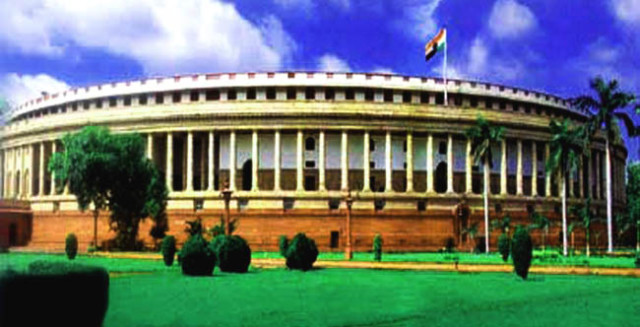Despite all the posturing and chest thumping that Indians tend to indulge in, the truth remains that India is a long way off from becoming a developed country. In fact, even almost 70 years after our independence, this magnificent amalgamation of paradoxes that we call our nation still struggles to provide for the basic needs to its citizens. On the other hand, Singapore, which gained its independence from the British in 1965, stands 11th on a global Human Development Index scale. This might make you wonder why India, which gained independence in 1947 and has a relatively larger pool of resources to fall back on, is lagging behind other countries in terms of development.

A major part of the problem lies somewhere within our political system and federal structure. Very much like a business entity, a country needs a robust leadership that can map out its growth blueprint for sustained development. The leaders must be in a position to make hard-hitting decisions that, while unpopular, will ultimately lead to the betterment of the enterprise. While this sounds good in theory, it is difficult to implement in India owing to its democratic approach.
Some might now call me out as a heretic for voicing this, for is democracy not the purest form of government? It could be, in theory. But in a practical democracy you often need to compromise on your political ethics and jump into the bed with rival parties with conflicting ideologies. Meanwhile, the opposition diligently opposes everything you say or do without ever bothering to transcend beyond the literal meaning of the word ‘opposition’. The resultant mixture can be as easy as jumping through a burning hoop with one leg tied behind your back while trying to escape a horde of evil, flesh-eating monkeys on a tightrope. Why do you think that GST Bill, which can directly add a 2% growth to the nation’s GDP, is still pending approval?
Consider a few examples that will make you realise the limitations that the country’s political apparatus faces. When the UPA-II government was in power, it was due to the outside support provided by rival political outfits such as the Samajwadi Party and the Bahujan Samaj Party. Needless to say, such an alliance was shaky at the best of times and severely restricted the strategies that the government could rollout. Same thing happened during the first ill-fated regime of Arvind Kejriwal’s AAP. Despite having publicly lambasted Congress for promoting corruption and stagnating the country’s growth, AAP had to rely on its support to form the government in Delhi. This match made in Raj Niwas lasted all of 49 days before the ruling party itself broke the alliance, blaming the Congress for underhandedly pushing hurdles in its path. Talk about awkward situations.
Another worrying aspect of the Indian politics is the two-faced stance that the parties employ on every issue. When the UPA-II government first proposed the bill for FDI, the BJP and its partners were amongst the most vehement decriers of the move. Now that the tables have turned and the BJP is in power, the same FDI is heralded as the cure for all evils. Similarly, in 2003, Sonia Gandhi famously called the Atal Bihari Vajpayee-led NDA government ‘incompetent, insensitive, irresponsible and brazenly corrupt’. The irony, perhaps, is made all the more bitter by the fact that the Congress-led UPA alliance ended up redefining the very meanings of incompetence and brazen corruption in the following years. This fickle behaviour does not fill a would-be voter with a lot of confidence.
The country’s political class is also prone to violent fits of public mudslinging. Name calling between politicians has become a fashion, while employing sly, deceptive tactics to misguide the masses is also fast becoming a norm. What is worrying indeed is the fact that the Indian population, which prides itself on its high intellectual quotient and has a lot of awards warehoused for future usage, often falls prey to such propaganda.
Given such glaring holes in the current political setup, there is an urgent need to revamp the infrastructure. The above mentioned issues need to be weeded out, for only once the political landscape is revitalized, India will be able to fully develop and achieve its potential as a new-age superpower.































